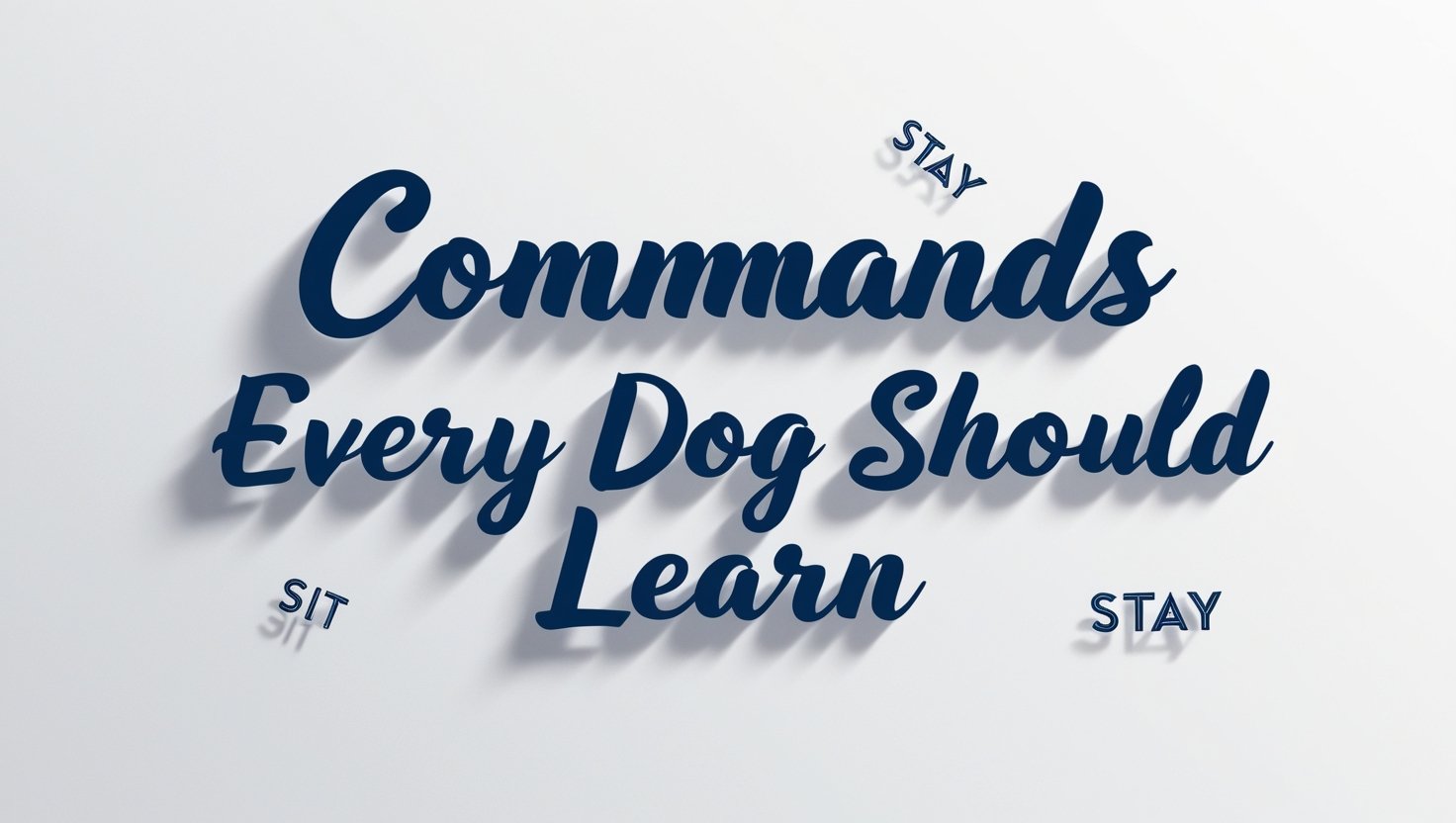Dogs are eager learners, and proper training helps them become well-mannered companions. Whether at home, on a walk, or in public, having a dog that listens to your commands can prevent accidents and strengthen your bond. Let’s dive into the top commands every dog should master.
The Essential Commands
1. Sit – The Foundation of Obedience
Teaching your dog to sit is one of the first commands they should learn. It helps with impulse control and is the basis for many other commands.
How to Teach It:
- Hold a treat close to your dog’s nose.
- Move your hand up, causing their bottom to lower.
- Say “Sit” as soon as they sit.
- Reward with praise and a treat.
2. Stay – Teaching Patience and Control
A well-trained dog should be able to stay in one place until released, preventing them from running into dangerous situations.
How to Teach It:
- Start with your dog in a sitting position.
- Hold up your hand and say “Stay.”
- Take a few steps back; if they stay, reward them.
- Gradually increase distance and duration.
3. Come – Ensuring Safety and Recall
A reliable recall command is crucial for off-leash adventures and emergencies.
How to Teach It:
- Use a long leash in a safe area.
- Say “Come” in an excited tone while backing away.
- Reward your dog when they reach you.
- Practice with increasing distance.
4. Down – Keeping Calm and Under Control
This command helps settle an excited or restless dog, making them easier to manage.
How to Teach It:
- Hold a treat near your dog’s nose.
- Move your hand down to the floor.
- Say “Down” as they follow the treat and lie down.
- Reward with praise.
5. Leave It – Preventing Dangerous Situations
This command can stop your dog from picking up harmful objects or chasing distractions.
How to Teach It:
- Hold a treat in both hands—one closed, one open.
- Show the closed hand and say “Leave it.”
- When they stop trying to get it, reward from the other hand.
- Repeat until they ignore the item on command.
6. Drop It – Avoiding Tug-of-War Over Objects
Dogs often pick up things they shouldn’t—this command ensures they let go safely.
How to Teach It:
- Offer a toy your dog likes.
- When they take it, hold out a treat and say “Drop it.”
- Reward them when they release the item.
- Practice with different objects.
7. Heel – Walking Politely Without Pulling
Pulling on the leash can make walks stressful. Teaching your dog to “heel” keeps them by your side.
How to Teach It:
- Hold treats at your side and walk forward.
- Say “Heel” and reward when they walk beside you.
- Stop if they pull; resume when they return to your side.
8. Off – Discouraging Jumping on People
Jumping is a common but undesirable behavior, especially with guests.
How to Teach It:
- When your dog jumps, turn away and say “Off.”
- Reward them when all four paws are on the ground.
- Stay consistent; don’t pet or talk until they are calm.
9. Wait – Teaching Impulse Control
This command is useful for preventing your dog from rushing through doors or out of the car.
How to Teach It:
- Have your dog sit before opening a door.
- Hold up your hand and say “Wait.”
- Open the door slightly; if they stay, reward them.
- Increase duration over time.
10. No – Setting Boundaries and Discipline
A firm “No” helps prevent unwanted behaviors like chewing or barking.
How to Teach It:
- Say “No” in a calm but firm voice.
- Redirect their attention to an acceptable activity.
- Reward good behavior.
Tips for Successful Dog Training
Use Positive Reinforcement
Reward your dog with treats, praise, or toys whenever they obey commands.
Be Consistent
Use the same words and gestures to avoid confusing your dog.
Keep Training Sessions Short
Dogs have short attention spans. Train in 5–10 minute sessions to keep them engaged.
Avoid Punishment
Never use harsh corrections. Instead, redirect unwanted behavior and reward good choices.
Conclusion
Training your dog is an ongoing process, but teaching these ten essential commands will set the foundation for good behavior and a happy relationship. Start with one command at a time, practice daily, and be patient—your dog will thank you with love and loyalty!
Frequently Asked Questions
How long does it take to train a dog?
It depends on the dog’s age, breed, and consistency of training. Most dogs learn basic commands within a few weeks of regular practice.
What if my dog doesn’t respond to training?
Try using higher-value treats, keep sessions fun, and ensure you’re not overwhelming them. If needed, seek professional training help.
Can older dogs learn these commands?
Yes! Older dogs can still learn with patience and positive reinforcement. It might take longer, but they can master commands just like puppies.
What’s the best way to stop a dog from jumping on people?
Teach the “Off” command and reward calm behavior. Ignore jumping, and only give attention when all four paws are on the ground.
Should I train my dog myself or hire a trainer?
Basic commands can be taught at home, but professional trainers can be helpful for stubborn behaviors or specialized training needs.

